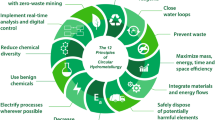Abstract
The root causes and impacts of three severe accidents at large civilian nuclear power plants are reviewed: the Three Mile Island accident in 1979, the Chernobyl accident in 1986, and the Fukushima Daiichi accident in 2011. Impacts include health effects, evacuation of contaminated areas as well as cost estimates and impacts on energy policies and nuclear safety work in various countries. It is concluded that essential objectives for reactor safety work must be: (1) to prevent accidents from developing into severe core damage, even if they are initiated by very unlikely natural or man-made events, and, recognizing that accidents with severe core damage may nevertheless occur; (2) to prevent large-scale and long-lived ground contamination by limiting releases of radioactive nuclides such as cesium to less than about 100 TBq. To achieve these objectives the importance of maintaining high global standards of safety management and safety culture cannot be emphasized enough. All three severe accidents discussed in this paper had their root causes in system deficiencies indicative of poor safety management and poor safety culture in both the nuclear industry and government authorities.


















Similar content being viewed by others
References
Cardis, E., D. Krewski, M. Boniol, V. Drozdovitch, S.C. Darby, E.S. Gilbert, S. Akiba, J. Benichou, et al. 2006. Estimates of the cancer burden in Europe from radioactive fallout from the Chernobyl accident. International Journal of Cancer 119: 1224–1235.
Chernobyl Forum 2003–2005. Chernobyl’s legacy: Health, environmental and socio-economic impacts. IAEA, Vienna 2006.
De Cort, M., Dubois, G., Fridman, Sh.D., Germenchuk, M.G., Izrael, Yu.A., Janssens, A., Jones, A.R., Kelly, G.N., et al. 1998. Atlas of caesium deposition on Europe after the Chernobyl accident. EUR report nr. 16733, EC, Official Publications of the European Communities, Luxembourg.
European Commission. 2012. Technical Summary on the Implementation of Comprehensive Risk and Safety Assessments of Nuclear Power Plants in the European Union. Document SWD(2012)287, European Commission, Brussels.
IAEA. 1996. One decade after Chernobyl. In Proceedings of an International Conference in Vienna, 8–12 April 1996, IAEA, Vienna.
IAEA. 2009. INES: The International Nuclear and Radiological Event Scale. Users Manual (Co-sponsored by the IAEA and OECD/NEA). Vienna: IAEA.
IAEA. 2012. Fukushima Daiichi Status Report 28 June 2012. Vienna: IAEA.
IAEA PRIS. 2012. IAEA Power Reactor Information System Data Base. http://www.iaea.org/pris/.
INSAG. 1986. Summary report on the post-accident review meeting on the Chernobyl Accident. International Nuclear Safety Advisory Group Report INSAG-1. Vienna: IAEA.
INSAG. 1992. The Chernobyl accident: Updating of INSAG-1. International Nuclear Safety Advisory Group Report INSAG-7. Vienna: IAEA.
Kemeny, J.G., et al. 1979. Report of the President’s Commission on the Accident at Three Mile Island. New York: Pergamon Press.
Moberg, L., and Persson, B.Å. 1996. Ten years after the nuclear accident at Chernobyl. Swedish Radiation Protection Institute Report i 96:01 (in Swedish).
NAIIC. 2012. Report to the National Diet of Japan by the Fukushima Nuclear Accident Independent Investigation Commission. Tokyo: The National Diet of Japan.
Nomura, S. 2012. Lessons learned from the Fukushima Accident. Presentation at the ASME Workshop on Forging a New Nuclear Safety Construct, Washington, DC. http://events.asme.org/NuclearSafetyConstructWorkshop.
Rasmussen, N.F., et al. 1975. Reactor safety study. An assessment of accident risks in U.S. Commercial Nuclear Power Plants. USAEC Report WASH-1400.
Reactor Safety Commission. 1979. Safe nuclear power? Swedish Government Official Reports SOU 1979:86 (in Swedish).
Sandia National Laboratories. 2012. State-of-the-art reactor consequence analyses project: Peach bottom integrated analysis. U.S. NRC Report NUREG/CR-7110, Vol. 1.
SSI. 1979. More effective emergency preparedness. Report by the Swedish Radiation Protection Institute (SSI) (in Swedish).
Swedish Government. 1981. Governmental decision 15th October 1981 on conditions for continued operation of the nuclear power reactors at Barsebäck (in Swedish).
Swedish Government. 1986. Governmental decisions 27th February 1986 on conditions for continued operation of the nuclear power reactors at Forsmark, Oskarshamn and Ringhals (in Swedish).
The Urban Siting Commission. 1974. Urban siting of nuclear power plants. Swedish Government Official Reports SOU 1974:56 (in Swedish).
U.S. Atomic Energy Commission. 1957. Theoretical possibilities and consequences of major accidents in large nuclear power plants. USAEC Report WASH-740.
U.S. NRC. 2009. NRC Backgrounder on the Three Mile Island Accident. U.S. NRC Office of Public Affairs, Washington, DC. http://www.nrc.gov/reading-rm/doc-collections/fact-sheets/3mile-isle.pdf.
U.S. NRC. 2012. State-of-the-art reactor consequence analysis report. Report NUREG-1935, U.S. NRC, Washington, DC (see also: SOARCA Brochure NUREG/BR-0359).
UNSCEAR. 2008. Sources and effects of ionizing radiation. Report to the General Assembly with Scientific Annexes, Volume II, Annex D, United Nations, New York, 2011.
Weightman, M., et al. 2011. Japanese earthquake and tsunami: Implications for the UK nuclear industry, Final Report, HM Chief Inspector of Nuclear Installations, September 2011, ONR Report ONR-FR-REP-11-002, Bootle, Merseyside, UK.
WHO. 2012. Preliminary dose estimation from the nuclear accident after the 2011 Great East Japan earthquake and tsunami. Geneva: WHO.
Author information
Authors and Affiliations
Corresponding author
Rights and permissions
About this article
Cite this article
Högberg, L. Root Causes and Impacts of Severe Accidents at Large Nuclear Power Plants. AMBIO 42, 267–284 (2013). https://doi.org/10.1007/s13280-013-0382-x
Received:
Revised:
Accepted:
Published:
Issue Date:
DOI: https://doi.org/10.1007/s13280-013-0382-x




